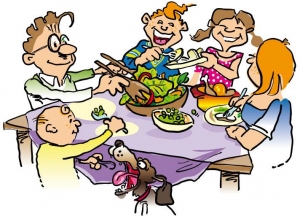There are kids who are Picky Eaters and those who are Problem Feeders; What’s the difference?
Picky Eaters: Are mealtimes stressful at your house? Do your kids turn their noses up at many of the wonderful foods you serve? Most kids go through “picky” phases, and it can drive parents nuts. Picky eaters can learn to like a wider variety of foods, but it takes time.
Problem Feeders: Some kids are more than picky! They refuse to look at, touch or taste many foods. They may cry or tantrum when you put an unfamiliar food in front of them. It doesn’t take much for them to refuse to eat anything at a meal. These kids may eat just enough to take the edge off their appetite, but not enough to grow well. On the other hand, they may eat enough to gain weight, and may even be overweight, but their food selection is so limited that they are not meeting nutrient needs.
Whether you child is a picky eater or a problem feeder, it can be very helpful to consult with a pediatric Dietitian-Nutritionist, experienced in feeding problems. They will evaluate your child’s nutrient intake and help you to come up with ways to make sure your child is well nourished.
If your child is a “problem feeder”, they may benefit from seeing an occupational or speech therapist to evaluate and deal with oral motor and/or sensory problems that impact eating. In the best of all worlds you would work with a nutritionist and a therapist to help your child overcome feeding problems. The process of helping a “problem feeder” become a healthy eater takes time! Sometimes up to a couple years–hang in there!
I am a Registered Dietitian-Nutritionist with many years of pediatric experience and special training in feeding problems. During the COVID-19 pandemic shutdown, I am doing Telehealth nutrition consultations. I often work with occupational and speech therapists to help children with feeding challenges. I am located in Bend, Oregon, but see kids throughout Oregon, Washington and California.
Call Lori Brizee at 541-788-2625 if you’re interested in a nutrition consultation
Check out some common issues with picky eaters and problem feeders.
Picky Eaters
Eat at least a few foods from each food group
Tolerate new foods on plate, will touch or even taste them
Eats at least 30 different foods
Enjoys foods with variety of tastes, textures and colors, but may be fearful of new foods
Usually Growing and gaining weight well
Problem Feeders
Eats less than 20 different foods
May eat a food for a while then never again
Cries or falls apart with new foods
Rejects entire food group or all foods of a certain texture
May be gaining weight slowly or be classified as “failure to thrive”
Has not transitioned from baby foods to solid foods by 16 months
Has not transitioned from a bottle to a cup by 16 months
Getting Started on Helping Your Child Eat Better.
Here are three things you can do to improve your child’s eating, before you see a dietitian-nutritionist or therapist:
- Space meals and snacks out by at least 2 to 4 hours. Give nothing other than water in between eating times. This helps your child to be hungry for those great meals and snacks you prepare! Children who “graze” do not eat nearly as well as children who have regular meals and snacks.
- ALL eating at the table or other “eating place”. Do not allow your child to walk around with food or eat while playing. Turn off the TV, and electronics, and put away the toys. This will limit distractions that keep your child from eating.
- Eat with your children! Family meals are fantastic; if that is not possible, sit down with your child at meal and snack time and eat with them.
These three things are first steps to improving a child’s eating. This may be all you need to do for a “picky eater”. A “problem feeder” will more than likely need a nutrition evaluation and feeding therapy; BUT, improving eating always starts with more structure to meals and snacks! Our goal is to enable our kids to not only eat a nourishing diet but to learn to enjoy food and mealtimes!


